With the ongoing fourth Industrial Revolution (Industry 4.0), IoT technologies are playing a major role in automating industrial processes. Integrating existing systems with IoT results in an intelligent solution that focuses more on providing better adaptability and resource efficiency. If you start building such systems from scratch while ensuring reliability and other factors, it will surely take a lot of research and time. This is where an IoT development platform steps in to save your time and makes things a lot easier.
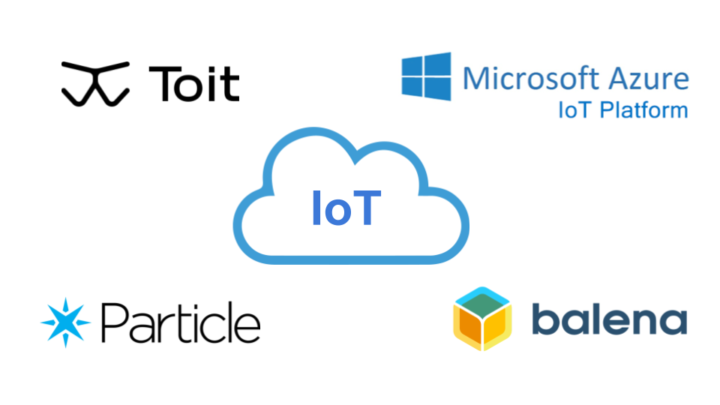
The main idea behind these platforms is to avoid reinventing the wheel and to provide standardized functions and features, so you don’t waste your time implementing something that someone has already done for you. You can collect data, control and manage apps and connect to their cloud services for better machine-to-machine communication. This article will look at some modern IoT development platforms and finally compare them to help you decide the best one for your project.
Toit IoT platform
Toit was founded in 2018 by the team of developers that built the V8 for Chrome at Google intending to build a general-purpose firmware for IoT devices to replace the traditional development process. They offer a completely new set of features and even a new python-like programming language developed solely for IoT. The Toit language is a high-level, object-oriented language with simple and easy-to-use Python-like syntax and is 20 times faster than MicroPython.
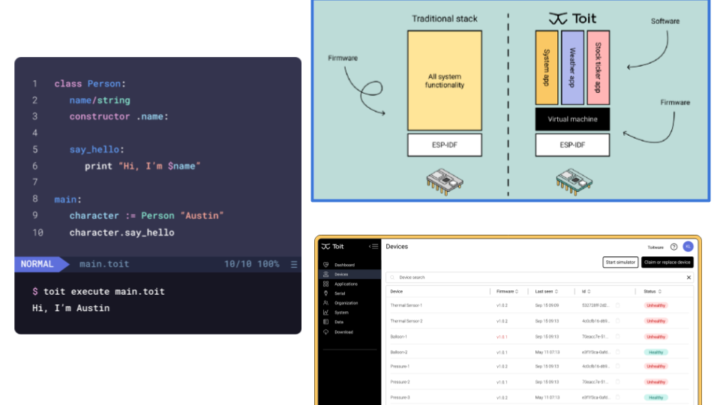
With Toit, a $2 ESP32 MCU is pushed to its limits to perform true multitasking. By splitting the firmware and apps code, Toit allows you to deploy multiple applications on the same device in a much lighter and agile process. So, you can easily try out new things without risking bricking your device.
Key Features for Toit IoT Platform:
- Light and efficient multitasking capabilities on an MCU, enabling complex IoT solutions to work on battery-powered devices.
- A new high-level object-oriented programming language.
- A publicly available gRPC API to have full control over your devices.
- An MQTT-like PubSub API for communicating with other devices over the cloud.
- Cellular connectivity with NB-IoT / CAT M-1 and out-of-the-box Wi-Fi support
CLI and SDK support on Windows, macOS, and Linux. - VS Code extension for seamless integration with their platform, allowing for faster development.
- No subscription or provisioning fees.
Balena IoT platform
The balena platform offers a wide variety of tools for building, deploying, and managing IoT apps on your device. This IoT development platform is targeted to be used on Linux-based devices like Raspberry Pi or Nvidia’s Jetson TX2. The device is initially flashed with balenaOS, with a Docker-compatible container and a Yocto Linux-based host OS. So you get the flexibility to choose your own programming framework but you’ll also have to code the functionalities yourselves.
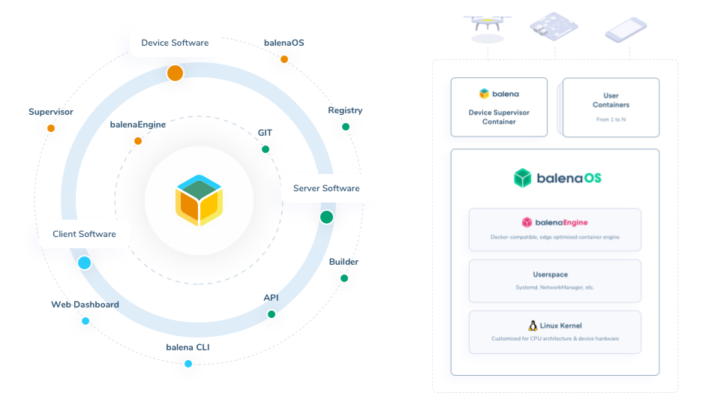
For managing your devices, balena provides a dashboard to monitor and interact with them. You can SSH into the host OS or in the running services through their web terminal. All these tools revolve around balenaCloud, which is the core platform here.
Key Features for Balena IoT Platform :
- Linux containers for Single Board Computers (SBCs).
- Support for open-source tools such as balenaOS, balenaEngine, and balenaEtcher.
- Built on Git, Docker, and Yocto.
- A device supervisor container to continue running and pulling new code even if an application crashes.
- Communication between balena and the device goes through encryption at all times.
- balenaFin carrier board based on Raspberry Pi compute module for a much richer experience.
Particle IoT Development Platform
Particle is a complete edge-to-cloud platform for IoT, offering solutions for hardware, connectivity, device cloud, and apps. The San Francisco-based company offers everything you need to build an IoT product from prototype to production. Particle has its own range of IoT hardware products, with connectivity support for Wi-Fi, Cellular, and BLE solutions, along with LTE cellular coverage in over 150 countries.
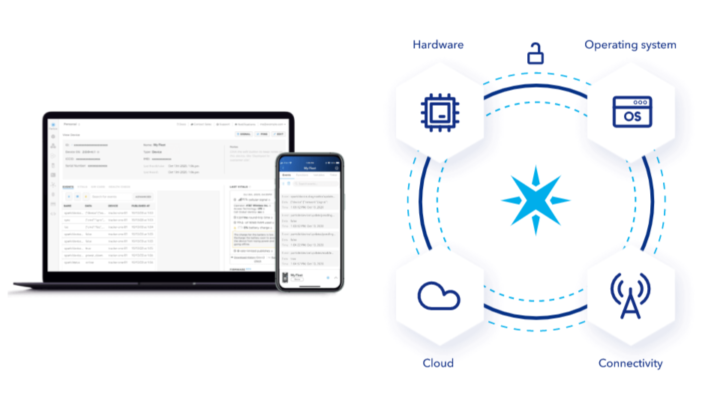
On the software side, Particle provides web and desktop-based IDEs in addition to command-line interfaces and libraries. Their Device Cloud, along with Device OS, IoT Rules Engine, and developer tools create a highly distributed system capable of supporting millions of simultaneous device connections. In addition to that, there’s a drag-and-drop rules builder that allows users to create cloud-side apps code-free.
Key Features for Platform:
- Based on Arduino and Arduino-like libraries to build an application.
- Provides a firewall-protected cloud.
- RESTful API support to send commands, check device variables, and more
- Provides everything needed to build an IoT solution: from hardware, OS, connectivity, and cloud.
- Cloud support to remotely monitor your IoT devices.
Microsoft Azure IoT
The Azure IoT Suite is an open-source cloud-based platform that is designed for different industries ranging from manufacturing to transportation to retail. This platform provides several but not many templates for building commonly used IoT applications with its IoT Central services. Azure’s IoT Hub enables you to connect thousands of sensors on manufacturing machines to a Hub where all data is processed and stored into multiple database systems.
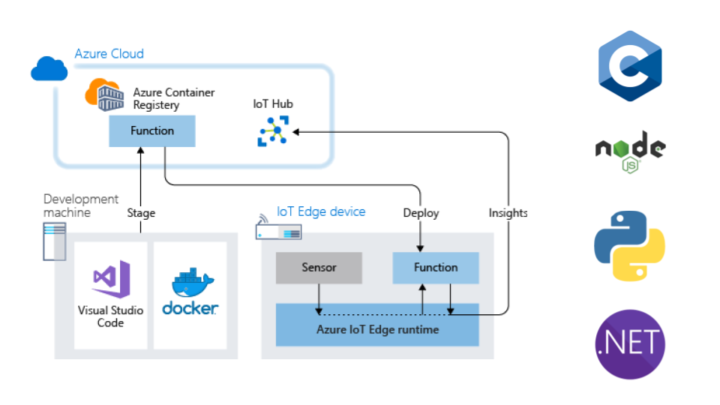
Microsoft provides two IoT solutions: Azure IoT Central and Azure IoT Hub. Azure IoT Central provides a fully managed global IoT SaaS (software-as-a-service) solution, a ready-to-use Model-based platform. IoT central provides many templates based on industrial applications. So if you require a readymade or a very quick solution, then IoT central is the one for you. Azure IoT Hub on the other hand is a platform as a service (PaaS) that helps you accelerate the development of custom IoT solutions. IoT hub provides many tools which allow developers to build and deploy their own IoT solutions.
Key Features for Microsoft Azure IoT:
- Supports AMQP, MQTT, and HTTP protocols.
- Provides very strong security standards.
- Supports integration with other Azure services/products.
- REST APIs with limited support on basic tier and full support on standard tier.
- Message routing to send messages from device to cloud services or a custom endpoint.
- Two IoT solutions depending on your requirements- Readymade solution or Custom solution.
- IoT Hub scales to millions of simultaneously connected devices and millions of events per second.
Summing up
Not all IoT applications are the same- some require a very low power consumption for battery-based systems while others may focus more on providing high performance irrespective of energy consumed. So after reviewing the above platforms, we can sum up some conclusions.
If you are looking to build an IoT solution with a low cost and minimal setup, then Toit is the best one for you. Toit enables a $2 ESP32 MCU to work as a full computer and supports connectivity out-of-the-box. ESP32’s low power consumption along with Toit’s light and efficient processes enable solutions to work for a very long time on battery-based systems. The new programming language also makes the development a lot smoother and quicker.
balena on the other hand is well suited for solutions where you don’t want to compromise on the processing power. The Yocto Linux-based OS allows developments on powerful single-board computers like Raspberry Pi, Nvidia Jetson TX2 or it’s own Rpi compute module-based balenaFin board.
If you are new to the IoT development process, then Particle will get you covered with everything. They provide a complete edge-to-cloud solution- from hardware, software, cloud services, and even a Particle IDE to develop with. Thus it eliminates the need to look around for other IoT vendors.
Finally, if you are willing to go all-out and want to deploy devices at a very huge scale, then the solutions offered by Azure IoT will be the best. IoT hubs can scale to millions of devices and can handle heavy throughput. Also, if you need a readymade solution or templates to build on, then IoT central provides it with all.
Apart from the above comparison, balena also offers a service to integrate with the Azure IoT hub for enabling bi-directional communication between the IoT app and the device. This way, users can leverage the best of both platforms if their solution requires such functionality.
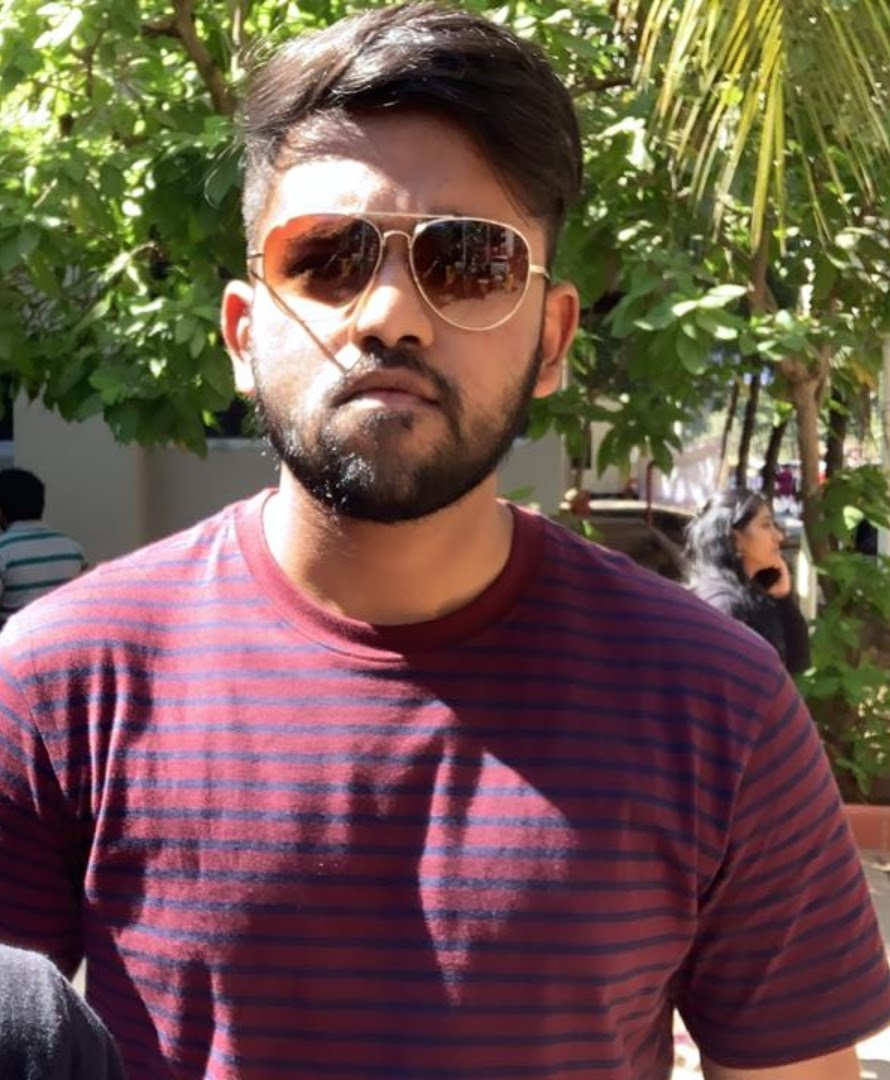
Saumitra Jagdale is a Backend Developer, Freelance Technical Author, Global AI Ambassador (SwissCognitive), Open-source Contributor in Python projects, Leader of Tensorflow Community India and Passionate AI/ML Enthusiast
Support CNX Software! Donate via cryptocurrencies, become a Patron on Patreon, or purchase goods on Amazon or Aliexpress




